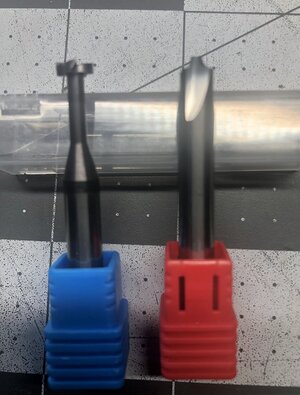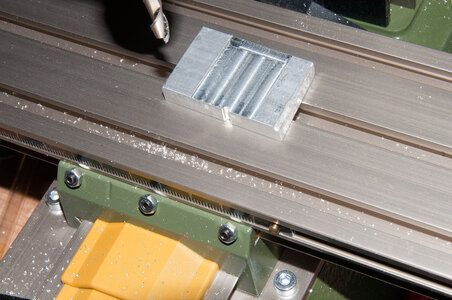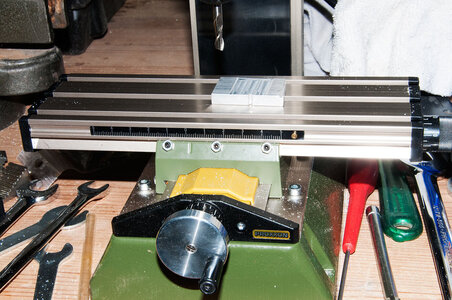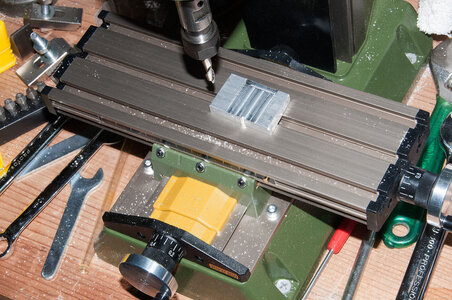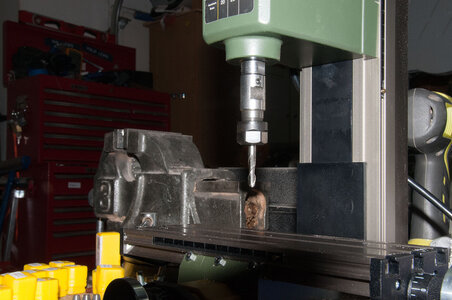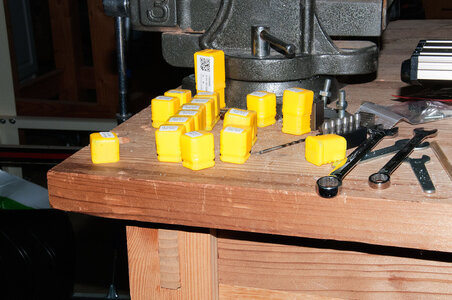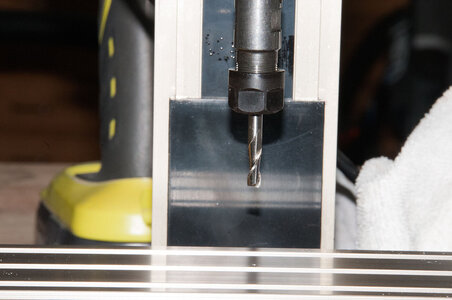JimNOT AT ALL! This topic was designed in mind for everyone with ideas for improving the Proxxon Mill. I just happened to share mine first. All ideas are welcome as comments and suggestions as well.
By tuning, I don't necessarily mean upgrades. Yes, the thrust bearings will make the turning job much easier, but as Stephan mentioned, it will not remove the backslash. There are things you can improve without additional cost. The mill comes from the factory assembled, but what about lubricant? What about the backslash on the X and Y-axis? You can tune those and at the same time put fresh lubricant.
With your coordinate table attached to the mill base, hold the X-axis table in your hand and try to move sideways, and up and down. Did you feel the backslash? If yes, you can adjust the tension using the three set screws designed for each axis. Loosen the set screws and push the brass plate against the housing, such as lossen\tighten the tension and removing the backslash. If you untighten the set screws, you can push the brass plate on either side. Put the lubricant and push it back again in the slot. Just carefully position the plate, on one side there are notches guides, they have to look at you. Be careful to tighten it too much, you will have a hard time turning the wheelWell...that's it does it cost you anything? Maybe a lubricant... BTW, I use the MultiLUB by STIHL. One tube lasts a lifetime, you need just a dub. But any machinery lubricants will do.
Sorry I had overlooked your explanation of tuning here when I posted a reply last night. I'll have to learn to use the forum search tools.
Appreciate the lubrication ideas and the MultiLub suggestion. My son is USFS and a big STIHL chainsaw proponent so the STIHL product would get a thumbs up from my son.
The proper nomenclature is essential in anything technical and here I'm also a newbie. One of my next steps in "tuning" is to make sure I can mill slots that are aligned to the faces/ edges of the work. I've used a mill bit and traversed the table with the mounted vise and see that the rear fixed vise face is "eyeball" ok. I'm using the fixed vise face as a reference. "eyeball" but nothing done with a caliper. Wouldn't know how or where to place a caliper to check it. And I don't know the techniques to make the 1/1000" adjustments if it was out. I don't need that level of precision at first, but eventually want to be able to mill slots that fit a PCB decoder board tightly into the alloy frame. For that I expect more precision is necessary. Plus, the alloy is weak, and reports that risk breaking concern me. It would seem that an aligned tool would reduce the forces that might cause the work to shatter. Frame parts are hard to come by.
I'm trying to understand the options and techniques developed for holding the work (model parts). I see from photos posted here that some shipwrights (is that a correct term?) use what in woodworking I would call a fence and a secondary wood table top. That suggested to me that perhaps some wood parts are moved past the bit as in woodworking, rather than clamping the parts and traversing the table. I'm probably way off in assuming so much from a photo. Or maybe the fence is at used to align long parts, the work is clamped in some fashion, and the table still traverses.
Appreciate the contributions of all and your work and time to admin this forum.
Bob in Denver





